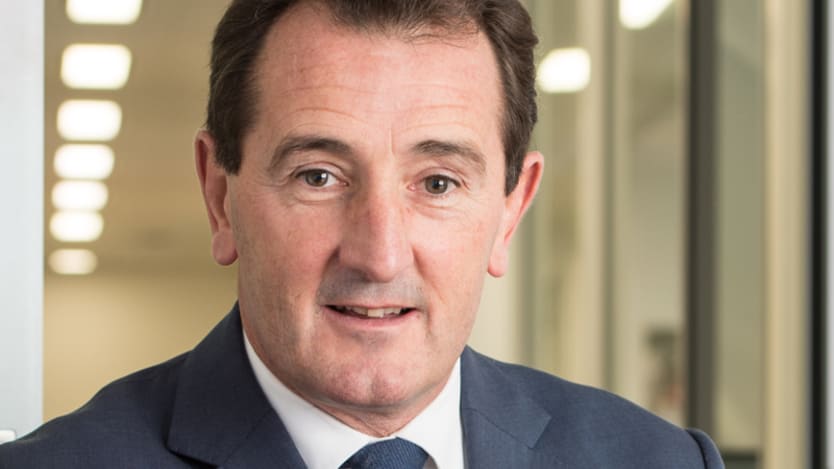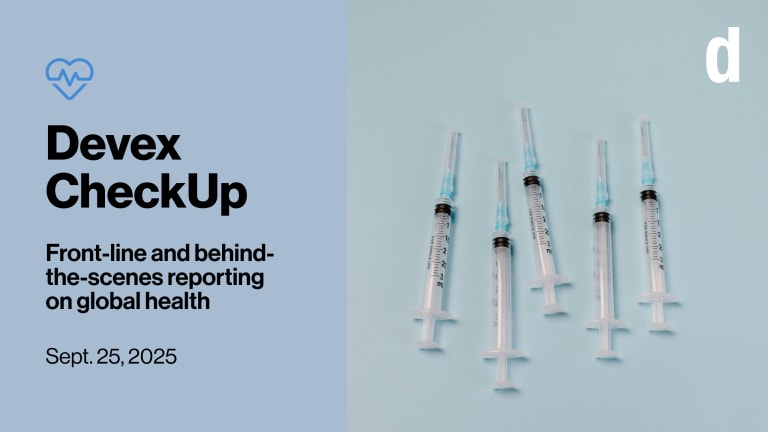
LONDON — Financial returns at the British development finance institution CDC will decline over the next five years, as part of a strategy to take on more risk after almost a decade of above-average return on investment, CDC’s chairman said Tuesday.
“We put on record that the new strategy we’re moving towards is taking on more risk, and we think returns will go down in CDC in the next five years compared to what we’ve done in the last five years,” Graham Wrigley, chairman of the board of the Department for International Development-owned DFI, told the United Kingdom’s parliamentary International Development Committee.
CDC kicks off new strategy with eye toward riskier investments
DFID will increase the amount it invests through the U.K.’s development finance institution, CDC, to allow it to make riskier investments. But will they be risky enough?
HM Treasury, the U.K. government’s economic and finance ministry, requires that CDC provide an average 3.5 percent return on investment across its portfolio, as agreed in the 2012 Investment Strategy with DFID. Since then, CDC has averaged a 7 percent return, with a 10.3 percent average between 2012-2016.
As part of the new five-year strategy agreed last year, CDC committed to investing in new, higher-risk ways to “tackle specific market failures that hold back development.” As examples of potential investments under the new strategy, the framework cites improving the price of and access to medicines and health commodities; tackling electricity transmission and distribution in Africa; and debt financing for the off-grid solar market and resource efficiency. Beginning last year, CDC also expanded its metrics for measuring impact beyond job creation, committed to looking for new ways to use its financing to mobilize other sources of capital and improved transparency and accountability.
Since 2015, CDC has also shifted its portfolio to investments exclusively based in Africa and South Asia, with a higher potential development impact that Wrigley said is a worthwhile trade-off for higher risk and lower financial returns.
“Thinking about the ability to take more risk, the ability to put money in places like Malawi, or Afghanistan where we [currently are a] cornerstone an investment fund, that ability to move along the risk spectrum is an important part of our development impact going forward,” Wrigley said.
Placing a greater emphasis on these new geographies and prioritizing development over financial returns has significantly altered the way CDC measures impact in just the past year, Wrigley added.
“For the strategy period from 2012-2017, the development impact was measured by looking at the countries in which we invest, by the sectors in which we invest, the number of direct and indirect jobs that we created which is recorded every year, by the amount the taxes the company has paid, the amount of power they generate,” Wrigley said. “We still do all of that — but one of the new commitments we’ve made as part of the new strategic framework based on feedback we had from the NAO [National Audit Office] was that we needed to have a more sophisticated, more robust way of measuring development impact.”
How CDC evaluates investments
CDC’s board is responsible for evaluating investments’ potential impact, and is made up of “a mixture of people with development backgrounds but also people with deep commercial experience,” Wrigley said.
Each potential investment is evaluated by a series of investment and risk committees, made up of board members who are “trying to triangulate between development impact, financial return, additionality,” on top of metrics used in the past — including direct and indirect job creation.
Committees are then able to evaluate the “development case” for each potential investment to establish “why we’re doing it, who’s going to benefit from it,” which is then made available publicly on CDC’s website, Wrigley explained. As part of the new layer of evaluation, CDC now have specific strategic themes around climate, gender, and job quality. Last week, CDC launched an internal gender strategy and an external gender equality position statement, outlining how it will promote women both within the organization and across its portfolio.
“Some of you may have seen last week that we published our gender strategy, which talks about the role of women in businesses, management, and boards,” he said.
The statement says CDC’s commitment will mean “considering women’s role as leaders, employees, entrepreneurs, suppliers, customers, and community members,” and sets out how CDC will identify and support “gender-smart” opportunities in its investments.
Wrigley added that the G-7 summit commitment last week by G-7 DFIs to invest $3 billion in businesses that benefit women “was led by CDC with OPIC [the Overseas Private Investment Corporation],” and said that CDC “coordinated and orchestrated the other European DFIs alongside us.”
At the other end, when evaluating the ongoing or final impact of investments, Nick O’Donohoe, chief executive officer of CDC, added that CDC is placing a greater emphasis on the amount of resources mobilized by CDC capital. Though this metric still lumps together other DFI investment as well as local, regional, and international capital, O’Donohoe told IDC: “One of the key strategic goals of the new strategy is to increase our mobilization efforts.”
According to last year’s figures, CDC mobilized a little over £600 million ($795.95 million) across its £4.8 billion portfolio, O’Donohoe said.
He added that CDC is actively looking for new investors to take on its investees in all stages and sectors. “Yesterday, we hosted an event in City of London bringing together mainstream investors who talked about how we can get more of their capital into the countries in which we invest, so it’s an incredibly important part.”
A CDC spokesperson expanded on the institution’s move to higher risk, explaining that over the past five years, along with DFID, CDC has been exploring how to increase impact.
“We have definitely made mistakes, we make mistakes at an individual investment level, and so part of our mandate is to do that, to take risks that the private sector won’t.”
— Graham Wrigley, chairman of the board of CDC“We often come across single investments, or whole strategies, that could transform sectors or markets, but where the inherent risk of failure has been too high for us, and other investors, to proceed,” the spokesperson told Devex. “In 2013 and 2015, we established two small teams to test strategies that would be high impact in nature, but carried a higher risk of failure: One team managed the Impact Fund and the other managed the Impact Accelerator.”
The two pilots have allowed CDC to “stretch risk appetite and lower our expectation of portfolio financial returns,” he said, bolstered by the new framework launched last year, which “allows us to innovate and complete more of these investments while accepting lower portfolio financial returns.”
The spokesperson explained that one potential “upshot” of these new market-building approaches — citing as examples debt financing for off-grid solar energy and transmission and distribution of energy — is that the investments will take longer to attract commercial capital, and therefore “may take longer to make a commercial return.”
Lessons learned
Wrigley added that while he feels CDC is on the right track, there have been some hiccups since launching the five-year strategy last year — adding this was to be expected as CDC pursues higher risk investments.
“We have definitely made mistakes, we make mistakes at an individual investment level, and so part of our mandate is to do that, to take risks that the private sector won’t,” Wrigley said. “As an organization I would say over the last five years, strategically I would say we’ve made two major errors.”
One, Wrigley explained, was that CDC “were too slow” to communicate its purpose and aims across all of parliament, civil society, and U.K. businesses, as a result of being “ too busy making things happen.”
During debates last year about whether to increase CDC’s investment ceiling by £6 billion, Wrigley said that “while we worked very hard to involve as many people as possible to try and learn and take things on board,” the organization didn’t adequately engage other stakeholders.
The second lesson, Wrigley said, is around assessing the impact of investments and the shift toward social and environmental returns as well as financial. “We’ve started to do that, and we can talk about that, but I think in hindsight, we should’ve started that work a year earlier,” Wrigley said.
Still, Wrigley said financial returns will continue to play a key part in establishing the success or failure of investments, even as metrics grow more inclusive of development aims.
“If we don’t make our development impact targets, we’ve failed; if we don’t make our financial targets, we’ve also failed,” he said.








